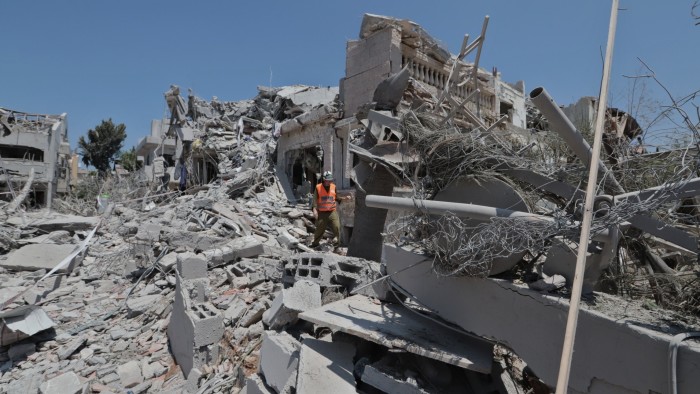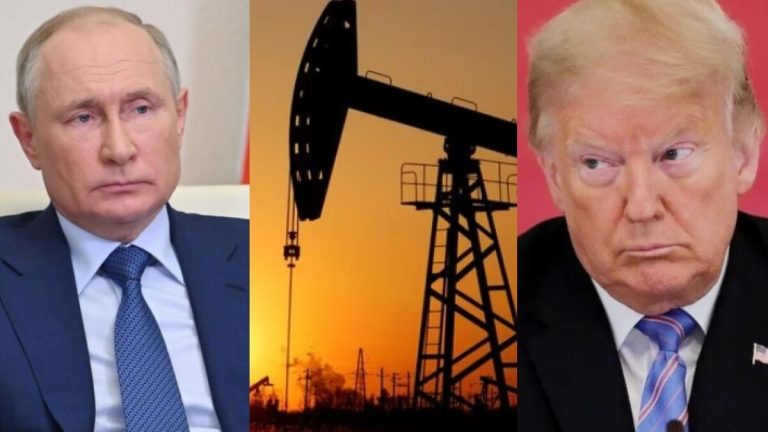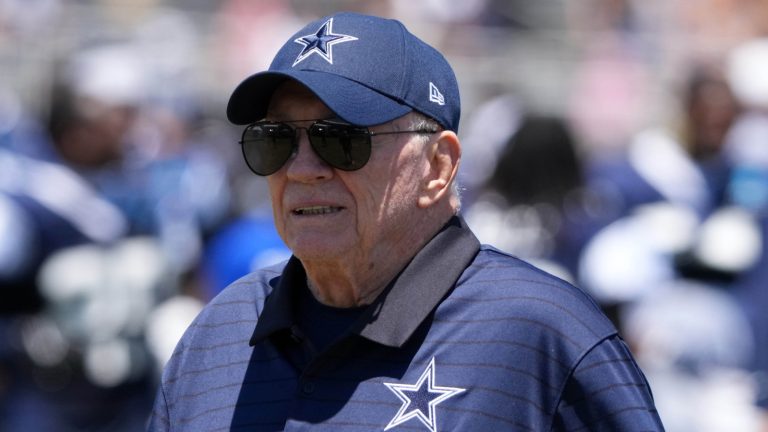Unlock the Editor’s Digest for free
Roula Khalaf, Editor of the FT, selects her favourite stories in this weekly newsletter.
The Iranian ballistic missile that smashed into Rishon Le Zion on Saturday killed two people, blew roofs and doors off buildings and was so powerful that Shahar Peled felt its blast in her house, four streets away.
But a few hours later as the 20-year-old Israeli watched first responders inspecting the wreckage of burned out cars and sweeping away shattered glass and masonry, she remained convinced that her country was right to launch its surprise attack on Iran and its nuclear facilities.
“If this is what Iran can do without nuclear weapons, I don’t even want to think what they would do if they had them,” she said, gesturing towards the site of the impact, where one house had been reduced of pile of rubble, the palm trees around it coated in a grey sheen of concrete dust.
“We still think this is the right thing to do.”

The strike in Rishon Le Zion, a city of some 250,000 people south of Tel Aviv, was one of several missile barrages Iran fired at Israel in the early hours of Saturday, as the decades-long shadow battle between the Middle East’s two most powerful militaries slid into outright war.
Israel began the fighting on Friday with a devastating bombing campaign that killed several senior Iranian commanders, damaged nuclear and military sites and killed scores of people. It said it was necessary to prevent Iran from developing a nuclear bomb.
Iran returned fire by launching hundreds of drones and ballistic missiles at Israel. While most were intercepted by air defences, some slipped through, killing three people, injuring dozens and repeatedly sending hundreds of thousands of Israelis to bomb shelters.
In two previous exchanges of fire between the foes last year, Israel was largely successful in warding off the Islamic Republic’s barrages, which were telegraphed in advance — the first by several days.
But although Israel’s recent strikes have degraded Iran’s ballistic capabilities, Iran’s barrages on Saturday did far more damage than the ones last year. Its forces fired multiple salvos and focused a large amount of firepower on Tel Aviv, where several missiles got through Israel’s defences.

Locals in Rishon Le Zion have experienced rocket strikes before, including years of being targeted during Israel’s repeated rounds of fighting with Hamas. In 2021 a woman was killed by a Hamas rocket just a few streets away from the site of Saturday’s impact.
Even so, many have been jolted by the level of destruction caused by the far more powerful missiles used in Iran’s latest salvo, which filled social media with images of rockets streaking across the sky, before erupting in fireballs as they slammed into their targets.
“This is the second time there has been a direct hit in this neighbourhood. The last time, a woman was killed, cars were burned,” said Nirit Ben Yaakov, a teacher who lives some 200m from the strike site. “But this was worse. The explosion was so big I thought it was in our street. We were in the shelter and the door of the shelter shook. It was very powerful.”
For Yaniv Nimni, whose house was just metres from the impact site, the experience was even more shocking.
“In my life I have heard explosions. But this is a completely different league. Until it happens to you, you don’t really understand what it means. You see it here and there [on social media and on television], in Tel Aviv,” he said, looking at the ruins of his house — its doors, roof and windows blown out, but the safe room where he had been sheltering with his family still intact.
“A few metres [closer] and you lose everything.”

Despite seeing first-hand the damage that a war with Iran is likely to entail, and despite 20 months of grinding war with Hamas, few of the locals watching the salvage operation in Rishon Le Zion had any doubt that Israel had taken the right course in initiating the hostilities.
“In war there are only losers. Even for the winners, there is a really big price. But we have to protect ourselves,” said Adam Shay, a 25-year-old truck driver, arguing that if Iran kept firing, Israel should kill its leader Ayatollah Ali Khamenei, as it did with the leaders of Hizbollah and Hamas last year.
“Israel should destroy any possibility of the enemy to pose any threat. Khamenei should get the message that if he continues, the bill he will pay will be the same as [Hizbollah leader Hassan] Nasrallah and [Hamas leader Ismail] Haniyeh.”
Limor Binder, who lives two streets away from the scene of the strike, agreed — not least because defanging Hizbollah and Hamas has left Israel’s arch foe more vulnerable than it has been for years.
“We don’t want war, we want quiet. But Iran has wanted to hit us for so many years and to wipe Israel out . . . Now there is no Hamas, no Hizbollah, it’s the right time,” she said. “We want [the war] to end, but we want it to end well: with them not having a nuclear weapon.”







